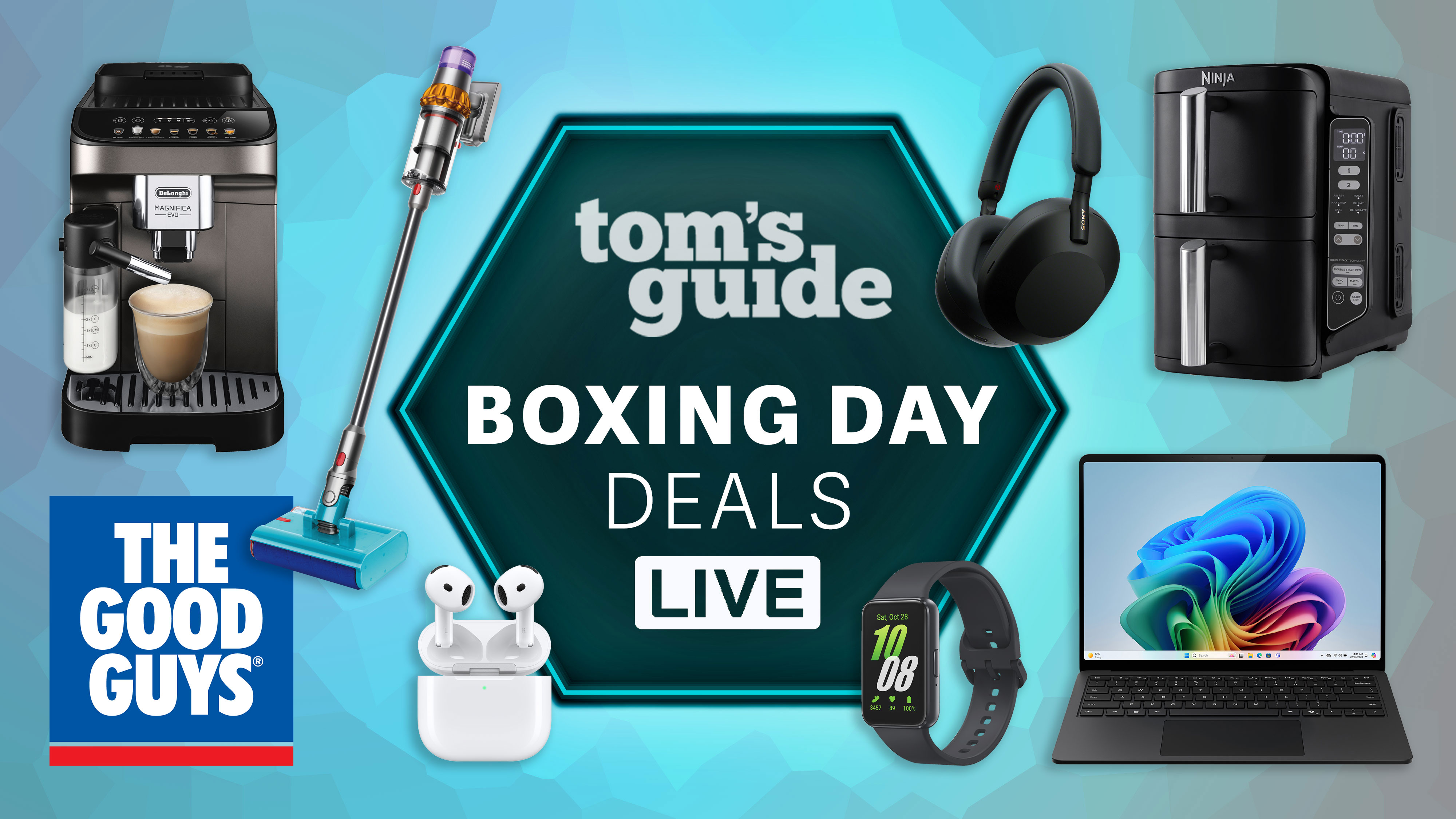Tom's Guide Verdict
The $59 Fitbit Zip is an effective fitness tracker in a compact design for those on a budget.
Pros
- +
Small and light design
- +
Works with multiple third-party apps
- +
Diet tracking
Cons
- -
No sleep tracking
- -
Can't be worn on wrist
Why you can trust Tom's Guide
So you want to get in better shape, but don't want to spend too much for a fitness tracker. The $59 Fitbit Zip is a low-cost, entry-level device that clips onto your belt and measures your daily steps and calories, and can integrate with a number of third-party apps. Overall, the Zip is a very good value, even if it's not our top pick in this price range.
Design
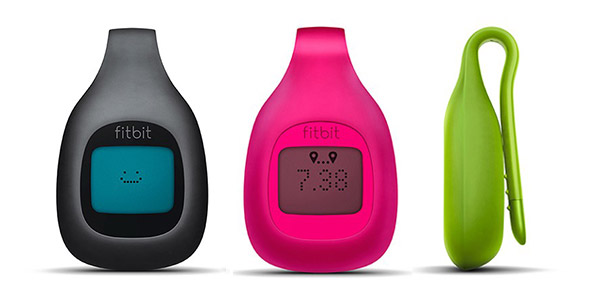
Don't want to look like you're carrying around a fitness tracker? The pebble-size Fitbit Zip will all but disappear in your pocket or on your person. The device is slightly rectangular with rounded edges, so it won't snag on anything.
The Zip comes in five colors: Blue, White, Black, Lime Green and Pink. Unlike the Fitbug Orb, which has an attachment for your wrist and belt, the Zip can be worn only on your belt. However, the Zip has a small LCD display, while the Orb does not.
The 1.4 x 1.1 x 0.38-inch Zip weighs 0.25 ounces on its own, and 0.55 ounces with its belt clip. That's slightly lighter than the Fitbug Orb (0.3 ounces; 0.95 ounces with wristband, 0.65 ounces with belt clip). The Zip is splash-proof, but the company advises against taking it for a swim.
More: Best Fitness Trackers
Press the small display on the Zip, and you can cycle between steps, miles, calories and the time. A small smiley face also appears to give a general indication on how close you are to reaching your goals for the day.
The Zip requires a Bluetooth 4.0 connection to sync its data, which means the iPhone 4S and later and only a handful of Android phones can be used. However, the Fitbit includes a Bluetooth dongle, so you can sync this fitness device with your notebook or PC.
Get instant access to breaking news, the hottest reviews, great deals and helpful tips.
App
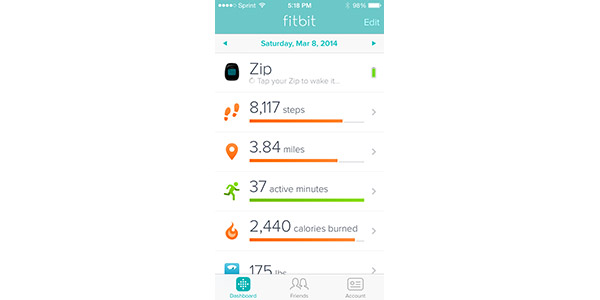
The Zip uses the same Fitbit app as other devices from the company, and shows at a glance the number of steps, miles, active minutes and calories burned. The gadget will also show calories eaten and water consumed, but you have to enter that data yourself.
Each of these categories lets you drill down further by providing charts and graphs that allow you to gauge your performance over time. We found that the interface on the Android, iOS and Web apps were appealing and intuitive to use. That said, we prefer Jawbone's UI with its polished graphs, easy navigation and level of detail provided in areas such as diet tracking.

With either the mobile or Web Fitbit apps, you can also manage and track your weight, body fat percentage and manually log additional workout activities you've done throughout the day. The former two categories can be automatically tracked if you're using the Fitbit Aria connected scale ($129), or you can manually enter the data using the scale and body fat meters you may already have. Making use of each of these additional categories gives you additional ways to manage your overall health and activity so you can achieve your fitness goals.
MORE: 10 Fitness Apps to Help You Shape Up
Performance
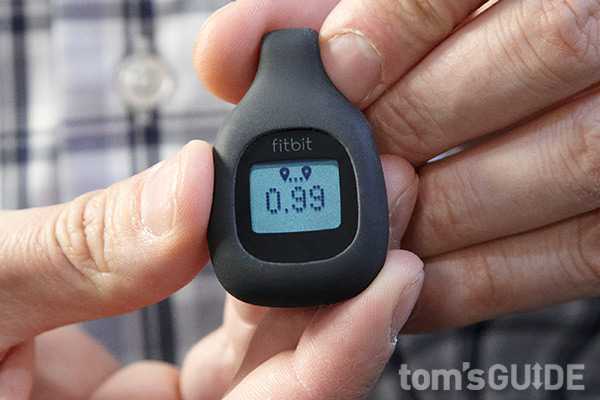
The Zip uses a MEMS 3-axis accelerometer to record your movements. The device is reasonably accurate, as it measured a 0.91 mile walk as 0.81 miles. Chances are, you're using this tracker to get a general picture of your health, and not a hyper-accurate accounting of your workouts.
Unlike Fitbit's other devices--and the Fitbug Orb--the Zip does not track sleep.
Apps
Fitbit's API lets developers integrate their data into your Fitbit dashboard, which serves as your one-stop-shop for your health-related needs. At the time of this writing, there were 36 fitness applications available to use with Fitbit, including Lose It!, FitStar, Map My Run, My Fitness Pal, Endomondo and many more. Each app helps you better incorporate fitness and dietary data into your Fitness dashboard, letting you use the best possible app for your personal tracking needs. Both Nike and Jawbone have developer APIs available, but Fitbit is the most comprehensive offering in terms of available applications.
Battery Life
Like the Orb and the Misfit Shine, the Fitbit Zip uses a non-rechargeable coin battery that the company says will last between 4 and 6 months.
Verdict
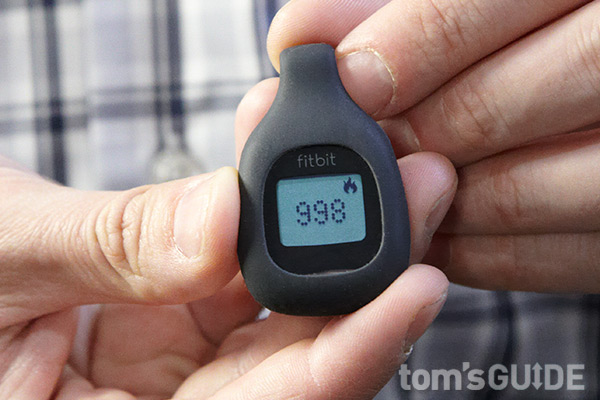
The Fitbit Zip is the company's budget offering, costing just $59, half that of its top-end Force. We like this tracker's light weight and small LCD screen. And while the Zip is a good choice for those who want a basic view of their daily fitness, the $49 Fitbug Orb tracks your sleep, and can be worn on your wrist, making it the more versatile device for less than $60. However, if you have other Fitbit devices, such as the Aria scale, or use other apps to track your activity, the Zip may prove more useful.
Follow Mike on Google Plus.

Michael A. Prospero is the U.S. Editor-in-Chief for Tom’s Guide. He oversees all evergreen content and oversees the Homes, Smart Home, and Fitness/Wearables categories for the site. In his spare time, he also tests out the latest drones, electric scooters, and smart home gadgets, such as video doorbells. Before his tenure at Tom's Guide, he was the Reviews Editor for Laptop Magazine, a reporter at Fast Company, the Times of Trenton, and, many eons back, an intern at George magazine. He received his undergraduate degree from Boston College, where he worked on the campus newspaper The Heights, and then attended the Columbia University school of Journalism. When he’s not testing out the latest running watch, electric scooter, or skiing or training for a marathon, he’s probably using the latest sous vide machine, smoker, or pizza oven, to the delight — or chagrin — of his family.

